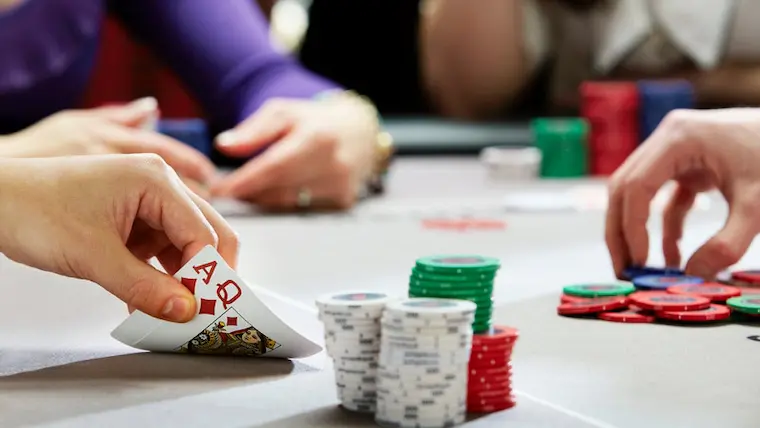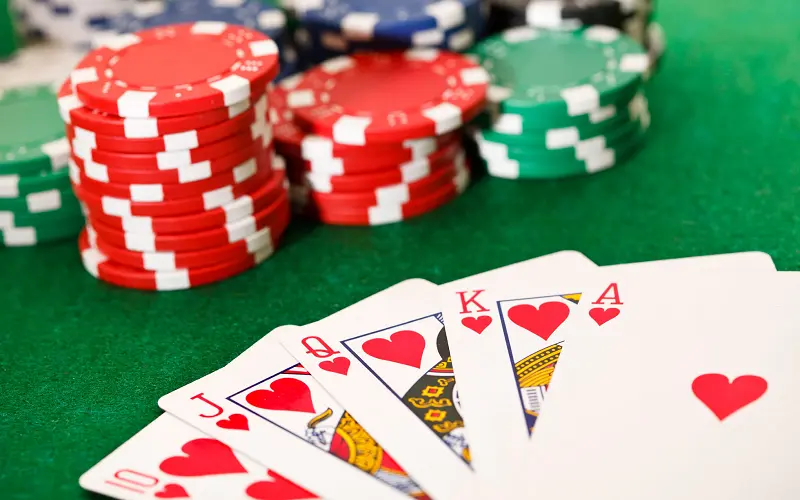You should remember that even professional players sometimes make these critical mistakes. Therefore, no matter what kind of player you are, these are common mistakes and need to be identified right from the beginning of the game. Let’s find out with WALO88 5 mistakes all Poker players encounter.
Subjective when playing Poker

The most significant drain on your bankroll is loose or subjective playing style, and there is a general term for this: Loose or Too Loose. This is one of the 5 mistakes all Poker players.
This term describes a player who plays too many hands regardless of whether they are nasty or not. And it is more common among amateurs than professionals. It comes from the idea that playing Poker and folding is boring and not fun anymore.
New players often have this problem, but even professionals do. They believe that the hands are wrong, but when they play hard in the next round, they can beat their opponents and ignore the statistical probability of the hands. As a result, they often lose at Showdown and fold.
Folding can be tedious, but if you consider the discipline, folding is an excellent therapy for playing Poker professionally and successfully. Choosing your hole cards increases your chances of winning; choosing whether to fold or stay on the Flop helps you stop wasting your bankroll unnecessarily.
Too Sure When Playing Poker

The opposite of Loose is Nit, playing too tight. You only call when you have a pair of Aces or Queens, and even then, you only raise when your hole cards are strong. In Poker, using this style of play makes it easy for opponents to guess your hand, and they will fold and only call when they have a strong enough hand.
Playing too often will cause you to miss out on good money-making opportunities. Here is an example:
You are holding 8 9 of diamonds. The cards are not good, but you raise 10K, which is the most fold except for the BTN position (close to the dealer), called 10K.
The flop is Q of diamonds, 10 of diamonds, 7 of spades. The hole cards immediately form a group of maybe 7, 8, 9, 10, waiting for any six or J, not to mention a hole with 8, 9 Q of diamonds. You raise hard on the flop, and your opponent can only fold immediately because there is a high probability that you will win the straight.
Of course, it is not easy to play. Still, based on the probabilities, 8 and 9 of diamonds are acceptable opening hands that Nit players will often give up, missing out on a perfect money-making opportunity.
Monochrome Play Style

In Poker, the most taboo is Monochrome Play. This style of play uses only one strategy applied to the entire game. Players must never forget that the nature of Poker sometimes does not come from the hole cards but from the player’s psychology. Experts often use many strategies in a match, even in a game to bait and trap the opponent, making the opponent misunderstand.
Flexibility and resistance to rigidity in Poker are things that every player must do. Sometimes you play freely, sometimes you play tight and predictable, and sometimes, you can even “push” to have dangerous closing moves, making the opponent not know which way to go.
No next action calculation
Many players need to calculate the possible subsequent actions. And often play extremely haphazardly and hope for luck. The advice is to do something other than do so. The problem here is that you must ensure it is a good game. You have a clear action plan and depend a little on luck and the opponent’s stubbornness.
Suppose the player holds 8 9 clubs, and other opponents fold in turn until BTN (close to the dealer) raises 20K; you follow 20K.
The flop starts with ten clubs, five clubs, and four spades. BTN checks for you to make a decision. At this point, what will happen next? What should you do:
First, calculate that the opportunity to buy a beautiful straight of clubs is significant; worse, there is a standard straight or a flush. You should bet to let the opponent have options.
If the opponent Folds:, we win, and this is the ideal case when the opponent has a weak hand but tries to force the issue. However, usually, the opponent will Raise. Most likely, a substantial raise is intentionally chasing the player even though the hand is weak; a moderate raise is likely to have at least a pair of 10s in hand. From here, it can be formed that the player continues to raise more to make the opponent afraid or fold immediately if he believes in the probability that the opponent may have a Q J of diamonds in hand,
Raise to chase other players correctly.

Knowing how to raise-to-chase when you have a strong hand, you should refrain from using the raise-to-chase strategy when you have a weak hand. It creates a terrible precedent and accidentally violates principle 1. But that does not mean raising to chase with strong hands continuously is a good idea. Sometimes, hands with A in A-6 to A-9 can raise to chase the opponent. This is a pretty good hand in the mid/late game. Therefore, considering to chase the opponent should be applied frequently but not continuously.
Conclusion
Here are 5 mistakes all Poker players make, hopefully, with this sharing from us. You can understand and avoid these mistakes when playing poker. Wish you success.
